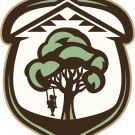Acorn to Oaks
K-LS1-1, K-ESS2-2, K-ESS3-1, K-2-ETS1-1, 1-LS1-1, 2-LS4-1, WL.CM1.N: Interpretive Communication, WL.CL2.N: Cultural Products, Practices, and Perspectives, WL.CL4.A: Intercultural Influences, HSS K.4, HSS K.6.3, HSS 1.2.4, HSS 1.4.3, HSS 1.5.3, HSS 1.5, HSS 2.1, HSS 2.4.3This lesson aims to connect young students to the rich cultural history and natural world through the exploration of acorns, a vital food source for Indigenous communities, particularly the Yurok, in Northwest California. Students will be exposed to children engaging in a series of sensory activities which teachers are encouraged to replicate in their classrooms. Through this lesson, students will learn about the life cycle of acorns and how they are harvested and processed for consumption. The lesson begins with an introduction to the cultural importance of acorns through a Yurok language integrated children’s book and their significance as a staple food for Indigenous peoples and their role in sustaining life in California.

